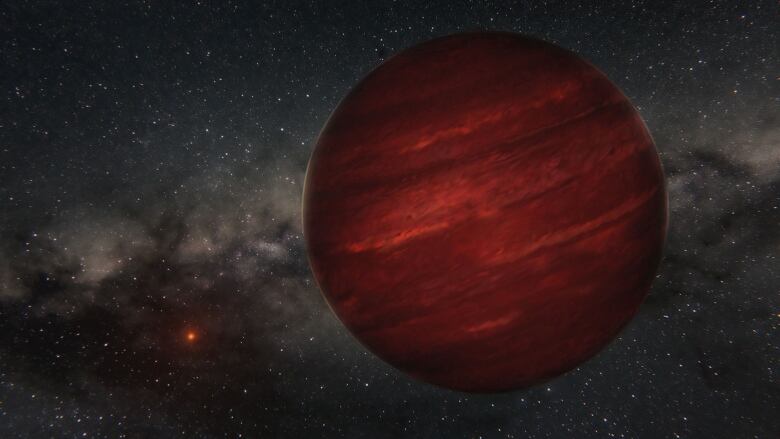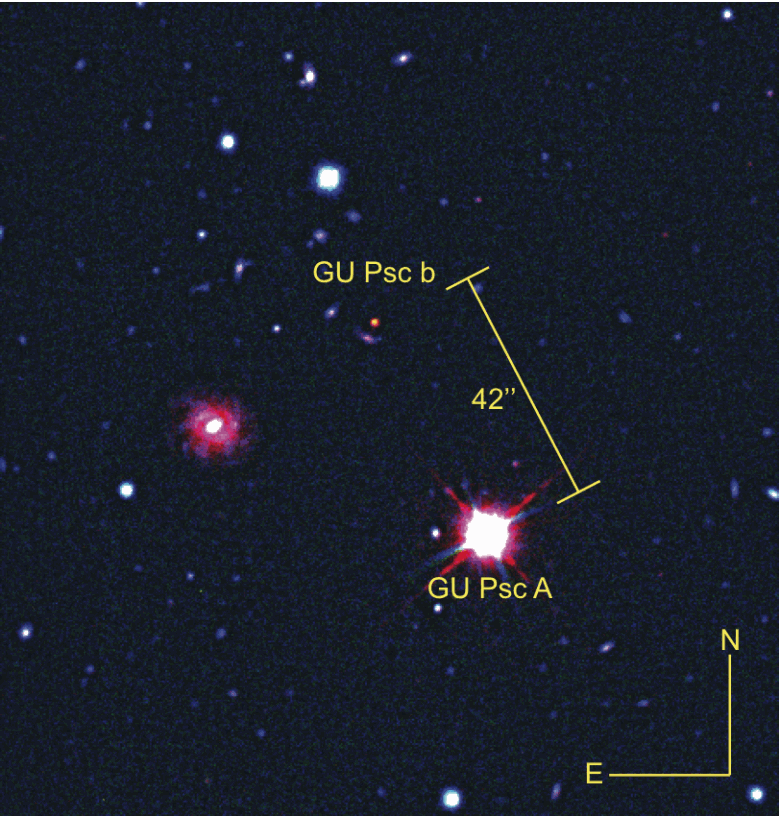Giant planet around dwarf star a surprising discovery
First of its kind may reveal new insights about planets and brown dwarfs

A gigantic planet-likeobject like no other has been found circling a tiny star at a recorddistance.
The object is a kind of "superJupiter" a gas giant about 10 times bigger than the biggest planet in our solar system, saysMarie-Eve Naud, a PhDstudent at the University of Montreal and lead author of a scientific report describing the planet. The study is being published in the Astrophysical Journal this week.
GU PSc b is 2,000 times farther from its star than the Earth is from the sun, 67 times farther than Neptune and 50 times farther than Pluto more distant than any planet ever discovered by a long shot, said Ren Doyon, a University of Montreal professor who is Naud's co-supervisor and co-author of the report.
But despite the vast distance between them, theplanet is bound to its star via gravity, Doyontold CBCNews.ca. "The planet is actually moving with its star."
The researchers estimate that the planet completes its orbit around the star about once every 80,000 years. The star itself is located about 155 light years away, in the constellation Pisces, and is a small, young one, with just a third the mass of our sun.
May not be a planet
"Usually you don't expect big planets around small stars," Naud said.

On the other hand, the unusual object is so big that it may not be a planet at all. It may instead qualify as a brown dwarf or a "failed star" too small to ignite the nuclear reactions that power stars.
"Either way this is exciting," Doyon said.If it's a planet, it shows that planets can form farther away from stars than previously thought, and may not always form from the "planetary disk" of dust neara star. If it's a brown dwarf, it shrinks the known size limit of objects that can form in a way similar to the way stars form.
Regardless of what it is, it is physically similar to a planet and is very valuable to scientists seeking to know more about planets outside our solar system, Doyon said.
"These are truly jewels in the sky. We can study them in gory detail."
Young hot and bright
Because it is so far from its star, the planetcan be easily observed without interference from the star's glare. That means it was much easier to determine things like the planet's size and temperature, said Naud.
The scientists also looked for "fingerprints" in different colours of light coming from the planet. Some of those indicated it is so young that it is still cooling and contracting to its final size, Naud said.
The researchers even detected water and methane in the planet's atmosphere, Doyon added.
The team found GU PSc b during a survey of young stars launched by Naud's primary supervisor, tienne Artigaud. He hoped that those stars might be circled by young planets, which are warmer, brighter and easier to see than older planets.
The new planet itself has a temperature of about 700 to 800 Cdespite the distance from its star. But because it is big and gassy, it wouldn'tbe habitable even after it coolsto a more comfortable temperature.
"What could be habitable is a moon around that planet," said Doyon. He added that Jupiter's moon Europa would have liquid water on its surface if it orbited Gu PSc b. However, the comfortable conditions wouldn't last long, as the planet would continue to cool rapidly as it got older.
The team found and studied the new object using the Observatoire Mont-Mgantic in Quebec, the Canada-France-Hawaii Telescope and the W.M. Keck Observatory in Hawaii and the Gemini Observatories in Chile and Hawaii.
Although the discoveryis unlike any planet seen before, similar objects maybe common in the universe, Doyon said. He added that researchers have already found another object much like it around another star.












_(720p).jpg)


 OFFICIAL HD MUSIC VIDEO.jpg)
.jpg)



























































































